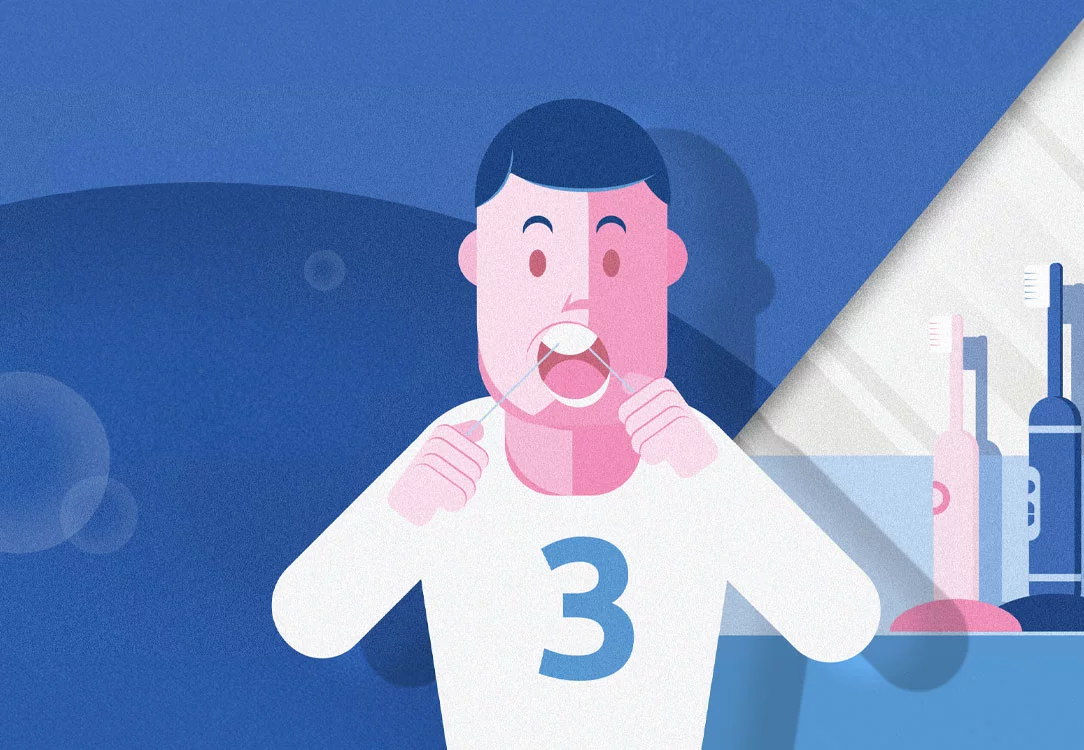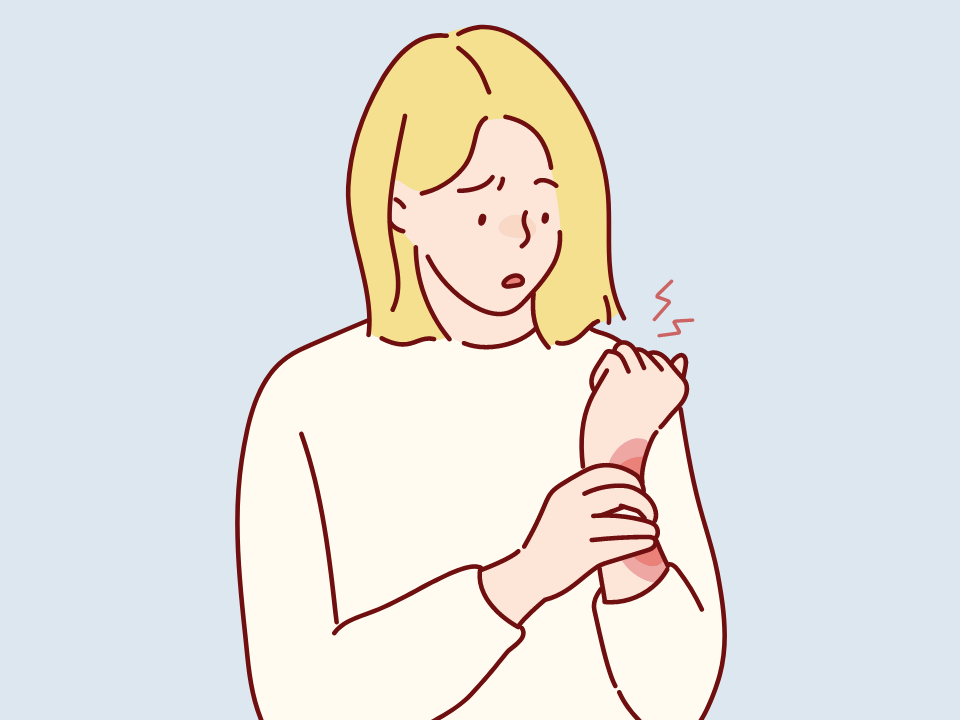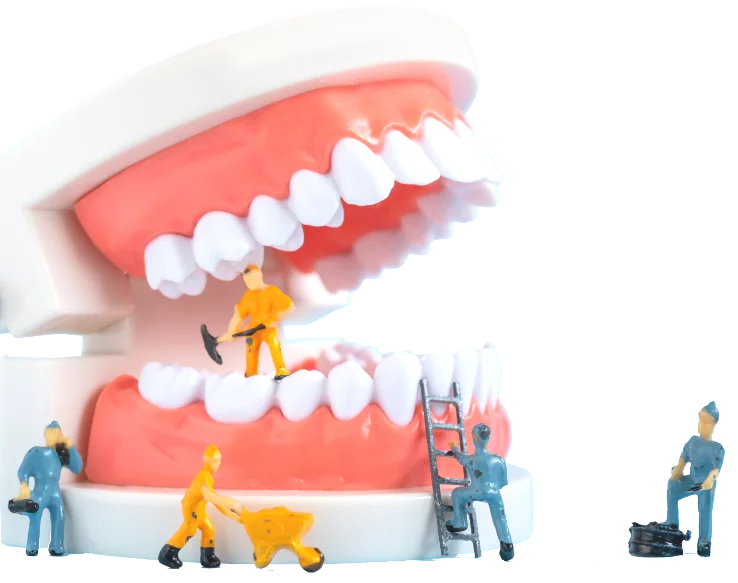First things first, oral health is connected to overall health. We call it the Mouth-Body Connection, and it is an essential concept of whole-body health.
That’s because what happens in your mouth can affect the rest of the body. When you have an infection or inflammation in your mouth, the disease-causing pathogens can permeate into the bloodstream and travel throughout the body. When this happens, the body has to devote resources to fighting off inflammation in the oral cavity, decreasing its ability to fight it off in the rest of the body.
- Brushing for two minutes twice a day with fluoride toothpaste
- Flossing at least once a day
- Consuming more fruits and vegetables and other nutrient-dense foods
- Avoiding sugary drinks or foods
- Not smoking or chewing tobacco
- Drinking fluoridated water
- Seeing your dental team at least twice a year
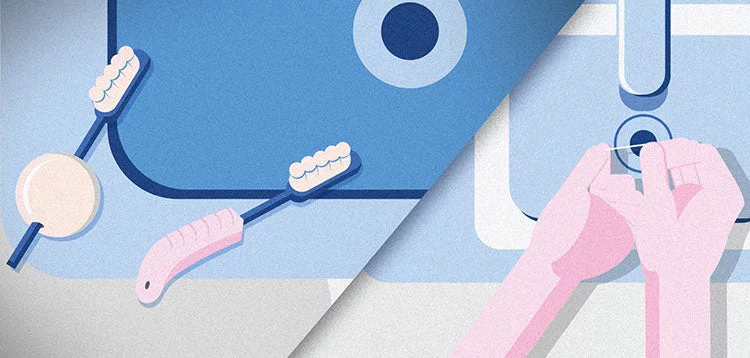
Brushing Teeth
- Use the toothbrush at the gum line at a 45-degree angle. With gentle pressure, brush the teeth up and down or in small circles.
- Brush all the teeth. Start with the top teeth, then brush both front and back, include all chewing surfaces for approximately two minutes.
- Don't forget the tongue. The tongue is where bacteria can hang out, so be sure to brush it.
Flossing the Teeth
- Get 18 inches of floss. Wrap the floss around each index finger.
- Grab the floss between your thumb and forefinger of both hands. Make a ½ inch section that you hold taught. Gently work that between the teeth and pull it up to the gum.
- Make a c-shape around the tooth. Slide it down the tooth and repeat for each tooth. Make sure that the pressure is on the tooth and not the gums.
Rinsing the teeth
- Get a capful of a fluoride rinse. Your dental professional may prescribe a prescription
- Tip the rinse in the mouth and swish. Keep it up for 60 seconds.
- Spit. Do not swallow the rinse.
- Do not eat or drink for 30 minutes. This time allows the fluoride rinse to do what it needs.
How to Adapt a Toothbrush
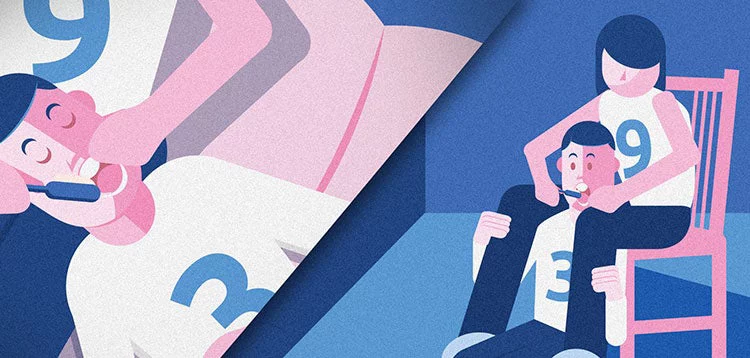
- Band it: You can use a wide elastic band to attach the toothbrush to the patient's hand. But not too tight; you want the band just tight enough to keep the brush there without cutting off circulation.
- Bend it: Sometimes, when the composition of the toothbrush allows for it, running it under boiling water makes it possible to bend it at a different angle. The new angle might be better for the patient to manage the brushing autonomously.
- Extend it: Making the handle longer might help when the patient cannot raise their arm. Some things that might help are to secure a wooden spoon or ruler to the toothbrush handle.
- Grip it: If the problem is the patient cannot grasp the handle, adding some volume to the handle might help. For example, putting the handle inside a sponge or bicycle handle grip might provide enough circumference for the patient to grab the toothbrush securely.
- Prop it: In cases where the person cannot hold their mouth open long enough to brush their teeth, propping the mouth open with something can help. You can use a moistened and rolled-up washcloth as a prop or tongue depressors taped together.
- Buy it: Specialty toothbrushes have multiple brush heads, which can help some patients brush. In addition, electric toothbrushes might be able to get the job done for some patients, too.
Taking a New Position on Brushing
- On the bed: Have the patient lie down with their head in the caregiver's lap. The caregiver should then support the patient's head and neck with their arm while the caregiver brushes the patient's teeth. This support also works on the sofa.
- In a chair: Good to note, it’s not just any chair. A beanbag chair might give a patient, who has trouble sitting up straight, the feeling that they can relax. Use the same positioning for the head and neck as the bed or sofa position.
- From the floor: There are two positions. First, the patient can sit on the floor while the caregiver sits behind them on a chair and has the patient lean their head on the caregiver's knees. Second, have the patient lie down with their head on a pillow. Then, kneel behind and brush their teeth. Remember, supporting the person's neck and head in these positions is imperative.
- Behind the wheelchair: Caregivers can stand or sit behind the wheelchair and brush the patient's teeth from behind them. If the wheelchair remains upright, the caregiver should use their arm to brace the patient's head against the back. If the wheelchair is tilted back into the caregiver's lap, the caregiver should lock the wheels for safety before reclining the patient.
Need to visit a Smile Generation-trusted practice for dental care? Use our Find a Dentist tool to find a practice nearby for you or someone you love.
Find your trusted, local dentist today!
Smile Generation blog articles are reviewed by a licensed dental professional before publishing. However, we present this information for educational purposes only with the intent to promote readers’ understanding of oral health and oral healthcare treatment options and technology. We do not intend for our blog content to substitute for professional dental care and clinical advice, diagnosis, or treatment planning provided by a licensed dental professional. Smile Generation always recommends seeking the advice of a dentist, physician, or other licensed healthcare professional for a dental or medical condition or treatment.


